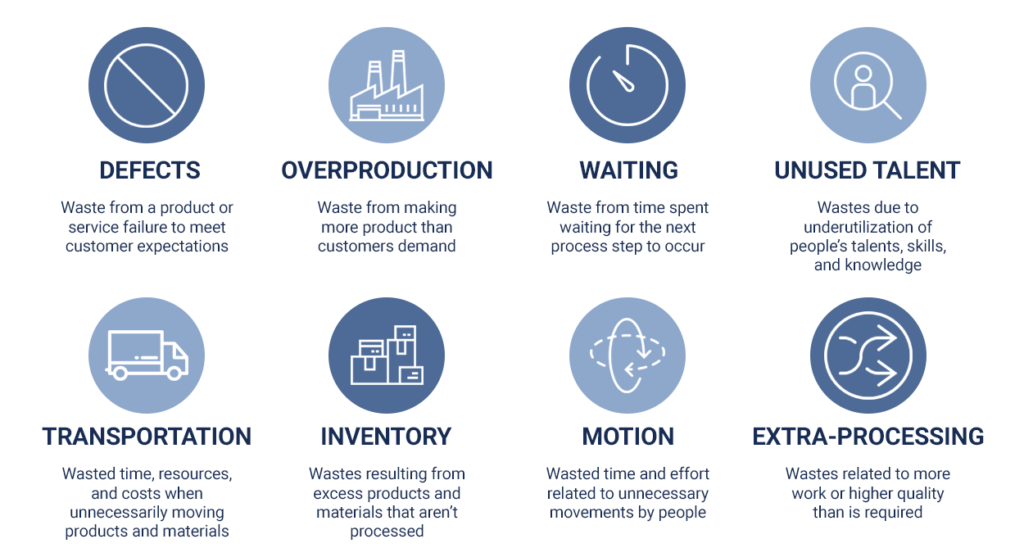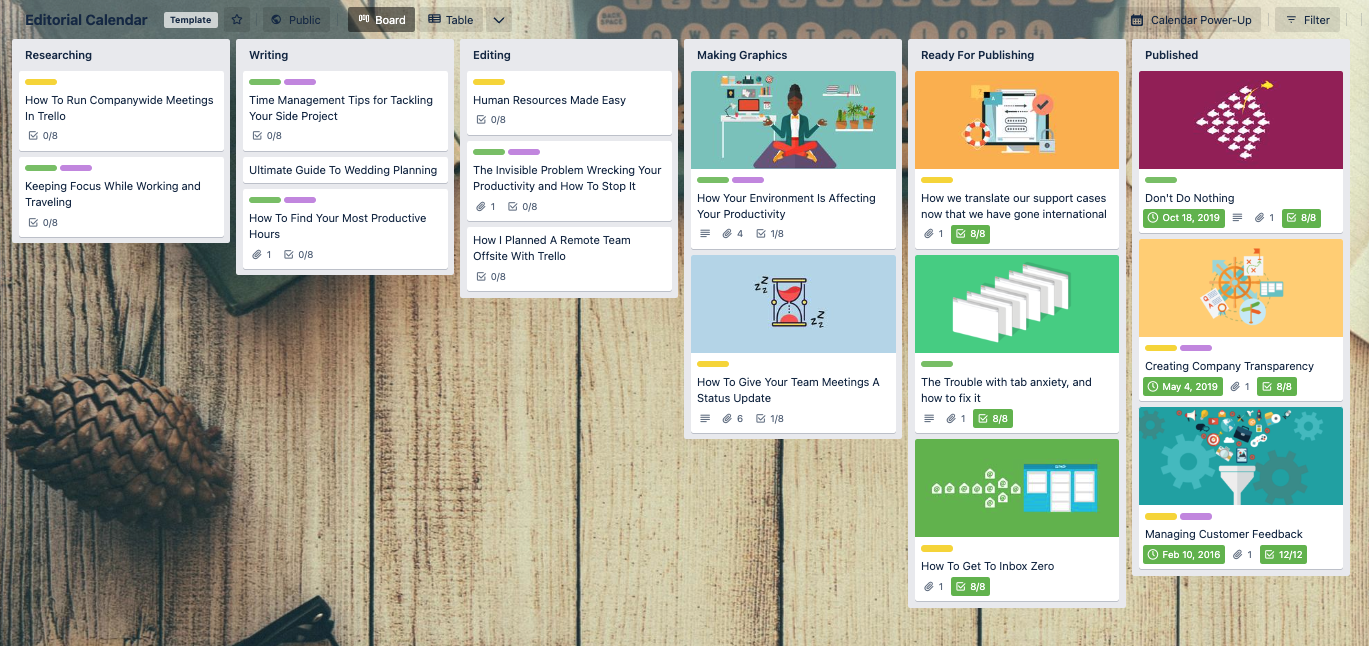In May 2020, up to 70% of remote-capable employees—or staff members whose jobs can be done remotely—worked exclusively from off-site locations.
Jump to February of 2022. Gallup reported the majority of remote-capable employees continued to work off-site part of the time, but the hybrid/work-from-anywhere (WFA) mix became nearly an even split: 42% of employees worked hybrid schedules; 39% had WFA schedules.
But what about long term? Remote-capable team members agreed that a hybrid schedule is their preferred office arrangement moving forward: Approximately 53% expect a hybrid work environment—and 24% expect fully remote work environments.
Many companies still haven’t adapted to the workplace changes brought on by the pandemic. Some businesses are still using the same legacy tools, processes, and methods that worked for them when their teams were still on-site 40 hours per week. Even when remote or hybrid work schedules are part of a company’s current working model, some businesses still haven’t fully adopted these practices.
What’s missing? Process improvement.
Continuous process improvement challenges companies to take a proactive approach to analyzing team members’ workflows for efficiency. Whether it’s hiring more people, eliminating steps from a particular business technique, or embracing new technology—a process can only be improved when companies give their current state a good hard look and get honest about how well their procedures work.
The truth is, in order to survive, companies must adapt to changes in the industry, the economy, and the world at large. Business process improvement (BPI) and business process management (BPM) make it possible, but implementing new policies isn’t easy. Change never is. But having the right work process improvement tools in place can help companies inspire even the strongest change resistors to embrace process improvement.
What is process improvement?
Process improvement is a methodology that helps companies gather and evaluate feedback to maintain continuous innovation in workflows, procedures, and other business operations functions. Process improvement is a component of project management.
Process improvement assumes businesses operate best when teams are consistently identifying, analyzing, and refining their existing processes, systems, and procedures. Once your teams discover their most effective and efficient business techniques, they can share their process steps within a work management solution like Trello Enterprise.
How to improve work processes
There are several ways to improve processes at work, but three practices—waste elimination, cost reduction, and streamlined communication—lead to the quickest positive impacts.
Eliminate waste
One of the most significant process improvements your company can make is reducing its waste. In this case, waste doesn’t just refer to the trash or rubbish staff members create (although that’s part of it) but also ineffective shipping practices, unnecessary paperwork, poor inventory management, inefficient financial processes, and more.
How to improve this process:
Identify and eliminate any waste created or trapped within your processes. One of the easiest ways to find and get rid of waste is by relying on Lean manufacturing and other Lean principles. The Lean business model encourages teams to seek out eight different kinds of waste:
- Transportation: Time, resources, and money caused by unnecessarily moving materials and products
- Inventory: Excess products and unprocessed materials
- Motion: Unnecessary movement (e.g., walking, reaching, lifting, bending, stretching, relocating items, etc.) by those involved
- Extra-processing: More, or higher-quality, work than what is required
- Unused talent: Underutilization of employees’ knowledge, skills, and talents
- Waiting: Time spent waiting for the next process step
- Overproduction: Creating more product than what customers demand
- Defects: A product or service that fails to meet customer expectations

The Lean business model encourages process improvement teams to seek out eight kinds of organizational waste.
Image source: https://theleanway.net/The-8-Wastes-of-Lean
Find any and all instances of the above types of waste and restructure your business practices to eliminate them. By taking this initial improvement step, you’ll notice your processes becoming more efficient and delivering value to your customers faster. Trello even offers a Lean Canvas template that helps leadership teams distill their business processes down to a single-page plan.
Process problem scenario:
A regional pharmacy chain blends topical medications on-site—mixing a variety of ingredients into a carrier ointment. One of the pharmacists notices that the pharmacy buys the base ointment in 50 one-ounce jars. The pharmacist knows that its supplier sells 50-ounce jars of ointment at a much lower price point per ounce. Clearly, the company could save money by changing its purchasing practices.
Process improvement example:
The pharmacist documents the company’s preference to switch to bulk-ordering ointment. This specification is added to the company’s official operating procedures. The pharmacy trains the purchasing representatives to default to the 50-ounce ointment jar. The pharmacy uses a Trello Enterprise board to create and house training materials and keep track of which team members have completed the training.
Reduce costs
The process of reducing overall cost is one that most—if not all—organizations have to face at some point (or several points) during the life of the company. Cost reduction is often considered the responsibility of your organization’s finance department and C-suite leaders—but it’s likely that everyone in the company has ideas about how to spend less on materials, equipment, and other resources needed in their jobs. Reducing costs is certainly an effective way to improve your business processes, but you should be careful not to cut costs at the expense of quality. Once your company has established itself for its quality products and services, purposely decreasing this quality will likely backfire quickly, negatively impacting any process improvement progress you’ve made.
How to improve this process:
Look for areas of operation in which your team has wasted resources that your organization pays for. Check for these common cost-reduction opportunities:
- Unnecessary tasks
- Resources that could be better allocated or automated
- Unnecessary use of products or raw materials
- Surplus of perishable items
- Paper records and forms
- Outdated vendor contracts
- Overstaffing
Process problem scenario:
A food and drink business that specializes in research and development (R&D) has an ordering and tracking system that could be described as “chaotic, at best.” Chefs work on different projects within different teams, but each uses ingredients from a common supply pantry. If one chef needs a specific ingredient, he has to check the physical storage inventory. If he can’t find the item there, it doesn’t necessarily mean the company doesn’t have it—another team member may be using it elsewhere. This scenario could lead to duplicate supply ordering and additional fees for rushed deliveries.
Process improvement example:
The chef speaks with his leadership team about the inefficiencies in their ordering and inventory management process. They work together to establish a centralized management system for inventory, order tracking, and documentation. Leadership shares the system with the rest of the department and has everyone download the Trello app. Trello Enterprise and its Inventory Management board template help the R&D team track when employees “check out” items from the inventory, which eliminates double-ordering and confusion about ingredient availability.
Streamline communication and collaboration
To streamline communication and collaboration, you have to eliminate the boundaries that keep team members from finding and sharing each other’s feedback and ideas. And although this process is all about people, improving it can only be accomplished with the help of a platform like Trello Enterprise. Trello helps improve teams’ communication and collaboration by connecting people—regardless of where they’re located—and displaying all relevant information in a single board. When team members have all pertinent project info at their fingertips, they spend less time digging through emails searching for answers.
How to improve this process:
To improve communication and collaboration among employees, you must make it easy for team members to share insights and information, give and receive feedback, and pass knowledge to each other without friction. When all communication and collaboration are transparent across your company, it minimizes arguments and back-and-forth discussions. This transparency also allows stakeholders to do their best work because they’re informed enough to make fast, appropriate decisions.
Process problem scenario:
An international content marketing agency has several different writing teams, each devoted to different customers. One of the smaller writing teams is highly specialized in fintech (financial technology). Each piece they produce requires extensive research and several rounds of editing. There was an oversight in HR, so all three writers on the fintech team are out on vacation during the same week. Another writer should be able to pick up the article, but they can’t due to siloed information: The technical writers saved their research and information within on-site systems (like desktop PCs) rather than sharing it to the cloud for cross-department collaboration.
Process improvement example:
The fintech team decides to use a Trello board to keep all research, customer notes, editing history, and the customer’s style guide in one location. They take extra care to include different cards that contain templates for each “type” of article (e.g., “listicle,” “how-to,” “use case,” etc.). The team provides step-by-step instructions for crafting their technical articles and includes a checklist of items any writer can reference in order to take on an assignment from this team.

Try a premade template like this Editorial Calendar board for communication and collaboration process improvement.
Image source: https://trello.com/b/UQk1wa4a/editorial-calendar
What are the process improvement methodologies?
Process improvement methodologies are techniques for increasing customer satisfaction and business efficiency. Although there are several process improvement methodologies, the three basic steps for all process improvement techniques instruct you to:
- Identify the improvement opportunity
- Analyze the challenge the opportunity presents
- Implement improvements to the process
Process improvement methodologies vary slightly in their instructional approach to the above three steps, and each framework suits a different business need. For example, some techniques focus on Lean strategies and others focus on your company culture’s role in process improvement. Let’s take a look at four of the most common process improvement methodologies used today: Kaizen, PDCA cycle, Total Quality Management (TQM), and Six Sigma.
Kaizen
Kaizen is an organization-wide, bottom-up strategy for continuous improvement. The main objective of Kaizen—a combination of Japanese words meaning “change is good”—is to develop a company culture that supports employees at all levels and encourages them to identify and implement process improvements.
Kaizen is practiced within “Events,” or five- to seven-day-long workshops in which teammates focus on a single process area that needs an update. Kaizen methodology helps teams make small but significant process improvements in a short period of time.
PDCA cycle
The PDCA cycle is an important component of several continuous improvement systems, like Kaizen. The PDCA cycle has four steps:
- Plan: Find opportunities for improvement and create strategies for change.
- Do: Test the change on a small scale.
- Check: Study the results of the change and determine the change’s efficacy.
- Act: Use the results to either implement a broad change or restart the cycle to discover additional areas for improvement.
The PDCA cycle—and other continuous process methodologies like it—helps your team with streamlining their efforts and taking a step-by-step approach to their goals. The PDCA cycle is also referred to as PDSA: Plan, Do, Study, Act.
Total Quality Management (TQM)
TQM is similar to Kaizen in its open-door policy on process improvement—anyone, regardless of position in the company, can contribute ideas and solutions to improve processes.
The TQM methodology uses customer satisfaction (CSAT) as its measure of success, so the system is more focused on the end user than Kaizen is. The overall goal of TQM is to cultivate positive long-term customer experiences by asking the entire staff to get involved in a shared business goal. TQM fosters a culture in which team members feel comfortable contributing to process improvement because they feel supported.
Six Sigma
The basis of the Six Sigma methodology is to improve the quality of business processes by finding defects. Once team members find the source of a given issue, they can refine process techniques to increase the ability to reproduce process results. With fewer defects and more efficient practices, your team delivers quality products faster—and, ideally, enjoys themselves while improving the bottom line.
Six Sigma is a data-driven approach to standardizing processes. Orgs measure performance via metrics that help them understand their processes. Improvement initiatives like Six Sigma are executed in specific steps that are part of a defined sequence. The steps in the sequence are aligned with specific improvement goals.
With Six Sigma, there are five steps to breaking down process improvement using one of two methods: DMAIC or DMADV.
DMAIC should be implemented when an existing product is not performing to its highest potential or meeting customer needs. DMAIC stands for:
- Define: Determine project goals and deliverables.
- Measure: Assess your team’s current business performance.
- Analyze: Find the root causes of any defects you discover (e.g., document redundancies).
- Improve: Decide how you will eliminate defects and reform your process.
- Control: Manage the performance of future processes.
In DMADV, the first three steps are the same as in DMAIC. You should use DMADV when your business is developing a new product or if using DMAIC with a current process or process improvement project doesn’t work.
- Define, Measure, and Analyze as you would with DMAIC.
- Design: Develop a process that fulfills customers’ expectations and needs.
- Verify: Confirm your process design performs as it should.
There are several other great process improvement methodologies out there—including Lean Six Sigma (a variation of Six Sigma), Kanban (and using Kanban boards, which we’re big fans of here at Trello), Theory of Constraints (TOC), and more—these are just some of the most popular.
3 signs it’s time for process improvements at your company
It may not always be apparent when your business processes need improvement. But understanding the warning signs may help you pinpoint the cause and effect of a problem. If you want to know when it’s time for a process improvement, look for three core symptoms: Workflow inefficiencies, excess meetings, and knowledge loss.
Workflow inefficiencies are getting in the way of progress
Effective process improvement demands continuous forward momentum. But inefficient workflows can slow progress, or, worse—bring everything to a standstill.
Imagine a classic assembly line. A toy car moves through several stations, and each station adds a different piece—the frame, wheels, and doors. But when it comes to the station that applies paint, each color needs to be mixed first. Very quickly, cars pile up. Soon, that backlog seems insurmountable.
Bottlenecks are a common workflow culprit. They make it difficult to predict output, like how quickly a team can complete a project or release an important software fix. The problem is that, very often, bottlenecks are not identified until after they’ve already impacted your work. But with the right tools and processes in place, you can monitor workflows and address bottlenecks before they get out of hand. A Lean tool like value stream mapping (VSM) that uses a flowchart to document all steps is helpful for processes with repeatable actions.
Teams are spending too much time in meetings
For decades, teams have relied on meetings to share information, give input, or come to a consensus on a topic, yet employees agree that meetings are largely unproductive and a waste of time. But it can be a hard habit to break when it’s how work has always gotten done.
Unfortunately, meetings cut into the time employees need to get their own work done. Meetings disrupt their flow, and in an effort to find distraction-free pockets of time, 76% of employees will avoid the office altogether just to get their work done.
Process improvement challenges teams to find better, more efficient ways to work, and that includes how teams meet to share information. The good news is that technology gives teams the gift of virtual collaboration, which helps them get work done anytime and from anywhere.
Poor knowledge-sharing practices are costing your business money
The larger your company grows, the more difficult it can be to share information between departments, teams, and employees. Often, companies have the wrong tools in place or too many tools altogether, leaving employees unsure where to even start looking for the info they need. And these poor knowledge-sharing practices can cost enterprises with at least five thousand employees an average of $13.3 million annually.
When information is spread across several tools or stored on team members’ personal computers, employees spend at least two hours per day searching for information they need—that’s 25% of their work week. All this wasted time takes a toll on the employee experience. In a survey of 1,001 employees, 81% expressed frustration at not being able to find job-related information.
Not having access to necessary information is even harder for employees who are new to remote work. Consider the shift companies made across the globe in response to the pandemic. For many, collaboration suffered as they struggled to move conversations from email inboxes to shared workspaces and resources to a cloud-based location rather than a company network. The shift to remote work brought to light the inefficient practices that made this transition difficult.
How process improvement supports your organization’s teams
Process improvements not only optimize, well, processes—they also support your team members and your company at large. Improving one aspect of your team’s workflow will have a positive impact on the entire organization. Small process changes add up. Process improvements also help support your employees in three ways: Efficiency, collaboration, and knowledge management.
Identifies bottlenecks and automates tasks
Work that happens in bursts rather than in a predictable flow might indicate a bottleneck. Say a design team needs their lead to sign off on concept sketches before they can take their idea to a finished product. If there are several ideas pending approval, designers might have a lull in work before the mad rush to finish a project.
For the design team, their team lead presents a bottleneck. They aren’t trying to cause a workflow disruption, but bottlenecks often indicate poorly allocated resources or an outdated process. Identifying them allows teams to brainstorm solutions.
Platforms like Trello Enterprise give teams high-level visibility into how tasks move through their workflow. With lists like Waiting Assignment, Researching, or Pending Review, teams can very quickly see where cards start to pile up and investigate the cause.
Teams can filter by member to see if a teammate is overloaded or if they’re free to take on some extra tasks. Filtering by due date can help teams determine if there are too many tasks to complete in a certain amount of time or prioritize which tasks to tackle first.
With Trello Enterprise, teams can also take advantage of unlimited automations to reduce their number of repetitive tasks. How does this help bottlenecks? Consider the team lead tasked with creating the same cards at the start of a development sprint or go-to-market campaign. Using the card repeater process automation or even board templates can speed up tasks or projects, so the team can get started with work without waiting on their lead.
Connects employees wherever they are
Changes to the workplace landscape have more teams connecting remotely or in a hybrid of at-home and in-office. As a result, teams rely on tools to help them accomplish shared work.
Collaboration tools allow employees to connect in real time or when it’s more convenient for them. This asynchronous method empowers employees to focus on their necessary tasks, then check notifications and messages when they take breaks or at a specific time in their day.
But collaboration tools are more than just a means for getting work done—they also help remote and hybrid teams feel connected. These shared workspaces become the center of team activities and interactions.
Collaboration tools are more than just a means for getting work done—they also help remote and hybrid teams feel connected.
Trello Enterprise gives teams fully customizable workspaces where they can be strategic about how they collaborate. Conversations about a specific topic can be kept in a relevant card by tagging team members, and employees can enable the card’s Watch option so they’re notified about updates to a conversation or task. With Trello, all interaction is documented, making work searchable.
Power-Ups make brainstorming easy by letting teammates vote on proposed items. When it comes to deciding on new process features, which tasks to tackle next, or which virtual team-building event sounds fun, reaching an agreement or consensus has never been easier. And if meetings are necessary, whether virtually or in-office, team meeting board templates can help teams keep everyone on task.
Creates visibility with centralized knowledge management
With centralized knowledge management, you create a “single source of truth” that your entire company can draw upon for information and answers. This level of transparency fuels process improvement, as it makes it easy for team members and leadership to find the information they need to make informed decisions.
Trello Enterprise excels at knowledge management. You can dedicate an entire board to a topic—like a deep dive on a product or everything your new employees need to know about their onboarding process. Storing information in an open and easy-to-bookmark location makes it simple for your employees to find the information they need without fear of asking for help.
With Trello, teams reap the benefits of knowledge being updated in real time. As teams master the process of sharing knowledge, employees can trust that the information they’re reading is the most current. Past or in-progress drafts can be dated and attached to cards for historical reference so new members of the marketing team, for example, don’t pull old branding slide decks thinking they’re current.
Worried about employees accessing information they shouldn’t be able to see? Don’t be. Whether at the company level or by department or teams, Trello lets your Enterprise Admins set board permission so that only approved employees can access specific boards or workspaces. This means extensive profiles on customer accounts, sensitive financial information, or secret in-development product features are safe from accidental internal (and external) exposure.
Process improvement starts at the top
Change is inevitable. When companies stay agile in their practices and tools, they’re better prepared to navigate whatever new trends or circumstances their industry or the economy brings. As a leader, you have the power to make that happen. Not only can you drive the necessary process improvement, but you also have the power to give your employees the tools they need to make these efforts a success.











































